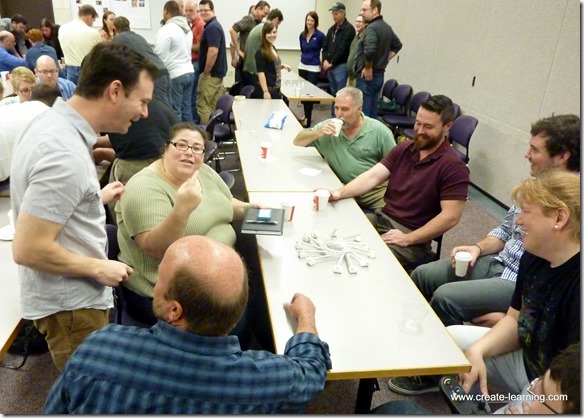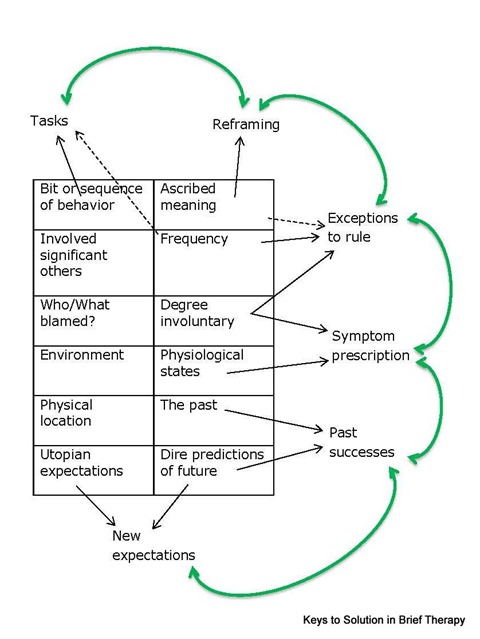In Transforming Complaints Toward Solutions & Understanding Complaints May Point to Solutions. I introduced 12 General Areas of complaints & 10 Skeleton Keys that may open the door to solutions from the complaints.
10 Skeleton Keys
Imagine that you have a key ring of 10 Skeleton Keys. As you hear the complaint a co-discovery process of ‘what does better looks like’ happens. From this Skeleton Key ring you are able to hand the best Skeleton Key to the person.
The Skelton Keys are:
- Direct Task Assignment;
- Reframing the Situation;
- Exceptions to Rule;
- Symptom Prescription;
- Past Successes;
- New Expectations;
- Minimal Change;
- New Location;
- When will guilt be resolved?;
- What difference will it make to them?
Each Skelton Key may work best depending on how the person frames the complaint.
“Since solutions are not predicable in any detail & since there is more than one potential way of behaving in the future without the complaint, the new set of expectations can be constructed out of any satisfactory or beneficial changes. Any change stands a chance of starting a ripple effect which will lead to a more satisfactory future.” – Steve de Shazer
Skeleton Key – New Expectations
What does the workplace complaint look like?
Dire predications of the future
- Examples in earlier article… If I try and this fails my future here is ruined! AND guess I just have to deal with a poor performing employee.
Utopian Expectations
- My expectations is that the staff will be able to read my mind and know what I want without having to tell them. I mean they know their work and they should know mine. Why do I have to tell them what I expect … they should just know.
- This is the last argument I am ever going to have with Lucas. We have vowed that we will never argue again to the staff and asked them to hold us both accountable. By never arguing again we know that the work will be greatly improved and the team can complete the work without the tension that happens from our arguing.
What would the New Expectations – Skeleton Key – look like?
New Expectations: With a Dire Predication of the Future & Utopian Expectations the current view of a solution may be steeped within a resistance loop. Perhaps, co-creating a slightly different expectation of what works may cause change to break a pattern.
Can you see another angle …
- What you shared is very useful and you have a good understanding of the work. Picture this future you described like a ball or circle. Choose 1 spot and angle of viewing this ball, that is your current perspective. Now, still picturing this ball, turn it about 45 degrees. Share how this challenge looks different. What is amplified? minimized? louder? quieter? … If you were standing in this new position what solutions would you offer to yourself? How will you know that the solution is different than what you see in the 1st place?
Expect the opposite of your expectation …
- What you described sounds great. Describe an example of how this expectation will be met? What are you doing specifically to incite this expectation to happen?
- Now that we understand that… what is the opposite? NOT a counter-example, meaning a negative outcome BUT an opposite expectation. For example you expect staff to be able to read your mind and know what to do – the opposite may be you reading their minds and know what they need in order to accomplish their work without having to ask you or you having to tell them. Describe in detail this opposite expectation. What is working well in this scenario? How can you make what is working well more obvious? Where is this already happening? How are you making what works and the expectations occur?
All Skeleton Keys are meant to find Cooperation and be close enough to create progress. If looking for new expectations does not work that’s OK. Spend time talking and try something else.
What do you think?
How have you found changing or creating new expectations useful in your work?



